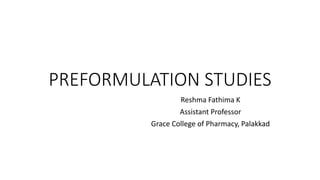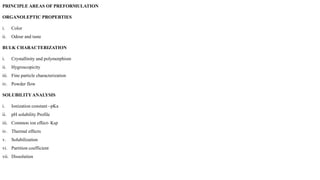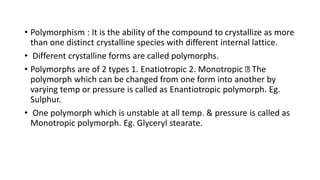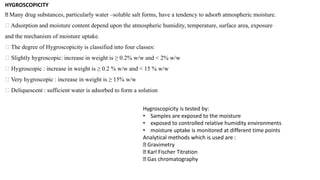1. Preformulation studies characterize the physical and chemical properties of drug molecules to develop safe, effective, and stable dosage forms.
2. Key areas of preformulation include evaluating organoleptic properties, bulk characterization, solubility analysis, and stability analysis.
3. Important parameters studied are particle size, hygroscopicity, crystallinity, polymorphism, and powder flow properties which can impact drug dissolution, bioavailability, stability and manufacturability of dosage forms.



















